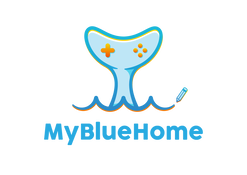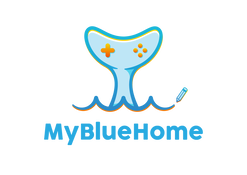Museum education is defined as a transformative experience, during which the visitor develops new attitudes, interests, values or attitudes of life, which is supported by interpretive media, multisensory exhibits and interactive multimedia, focusing mainly on objects.
Establishing and maintaining a school museum is a great way to develop pupils’ skills, knowledge and understanding of the past and of the museum’s chosen theme. Making a museum about their school or their locality helps pupils develop a sense of ownership, pride and identity.
By collecting, recording, storing and displaying their collection in exhibitions, pupils develop historical skills in enquiry, chronology and using primary and secondary sources. Not to mention digital, literacy and other skills across the curriculum.
They will also create a unique, relevant and fascinating resource both for themselves and for pupils of the future. Involving the pupils in as much developing, maintaining and decision-making as possible.
Your local museum can give you useful advice and support on collecting, looking after and displaying your objects. The gate of the museum can be open for many visits, with a different goal and the formation of an educational climate that favors cooperation and contributes to the creation of a pleasant experience and change of attitudes.
Establishing and maintaining a school museum is a great way to develop pupils’ skills, knowledge and understanding of the past and of the museum’s chosen theme. Making a museum about their school or their locality helps pupils develop a sense of ownership, pride and identity.
By collecting, recording, storing and displaying their collection in exhibitions, pupils develop historical skills in enquiry, chronology and using primary and secondary sources. Not to mention digital, literacy and other skills across the curriculum.
They will also create a unique, relevant and fascinating resource both for themselves and for pupils of the future. Involving the pupils in as much developing, maintaining and decision-making as possible.
Your local museum can give you useful advice and support on collecting, looking after and displaying your objects. The gate of the museum can be open for many visits, with a different goal and the formation of an educational climate that favors cooperation and contributes to the creation of a pleasant experience and change of attitudes.
THE CASE OF THE MUSEUM IN ITALY
The Ocean Museum created by primary school students from ISTITUTO COMPRENSIVO CAMERANO "GIOVANNI PAOLO II" SIROLO is currently on display for studenyts and staff of the school, and for external visitors on special open days.
The Museum involved the studenst in the study of ocean related topics and in the development of scientific experiences, art work and more, with the support from the schools' teachers and external marine biologist.
We hope this can inspire you to also create your own Ocean Museums at your local school!
The Museum involved the studenst in the study of ocean related topics and in the development of scientific experiences, art work and more, with the support from the schools' teachers and external marine biologist.
We hope this can inspire you to also create your own Ocean Museums at your local school!
WHY & HOW TO CREATE YOUR OWN OCEAN MUSEUM!
Pedagogical objectives
- Harnessing the educational value of the marine environment with new alternative forms of communication and learning
- Encouraging students from different cultural and social backgrounds to approach and understand the value of the oceans for human life and survival
- The course to be made interesting by students with different age, skills and abilities
- Cultivating critical thinking and knowledge about the problems oceans face today
- The acquisition of social, physical skills and emotions through the digital use of museum material
- Redefining the definition of learning and pedagogical techniques used to achieve new knowledge about marine environments
- The discovery of new meanings by the students themselves inside the school and outside it, since they will be able to visit the digital museum whenever they wish
- The combination of learning and entertainment about Sustainability and Ocean Literacy
- Creating an environment that enables students, teachers and parents to discover new ways of studying and connecting pre-existing knowledge with new knowledge, while correcting the wrong ideas that may exist
- The encouragement of the visitor of the museum to observe, experiment and investigate without simply transmitting information regarding ocean education
- Strengthening personal initiative and free expression
- The Empowerment of positive attitudes from the entire educational community on sustainability issues
- The investigation of the solutions that should be adopted by Science and Governments
Learning process
Creative and collaborative teaching and learning process; support learning across the curriculum, lifelong learning skills include:
- multiple perspectives
- entrepreneurship
- use of ICT tools for collecting data; for sharing data and communication; for doing creative activities
- digital skills : Effective searching, Analysing, Presenting, Combining multiple applications
Improved competences
Creative and critical thinking
Literacy
Personal development
- Generating ideas
- Questioning assumptions and exploring possibilities
- Inovating, testing and adapting
- Creating
Literacy
- Developing language and vocabulary
- Persuading and arguing
- Discussing and debating
- Communicating in different forms for different purposes
- storytelling
Personal development
- Working collaboratively
- Taking responsibility
- Planning
Ideas for the setting of a museum
- Sign a partnership agreement between our institution and a school in order to pilot and set up a museum (if you are not a school)
- Sign a partnership agreement between our institution and a local/regional museum
- Role, objectives and benefits of the museum
- Workshop: invite a professional from a local museum
- Workshop: invite a science teacher - discussions about the topic
- Research - Documentation (books, encyclopedia, video…)
- Visit in a local museum, virtual tours of world museums
- Inspiration gallery (collage, drawings, padlet, other digital tools), 3D structure of the museum
- Thematic working groups: sciences; arts; IT…..
- Collecting objects, creating materials, organizing the space; create the story to be told to the general public
- Exhibition – eye catching, exciting
- Marketing: e flyers, posters, social media
- Launch of the museum onsite and online
- Presentation of the museum (film)
- Virtual tour on youtube
- Guided tour for pupils from other schools
- Feedback / reflection
Steps to making your own museum
1. What will be the museum for ?
2. What will you collect? Museum collections can include objects, specimens, images, films, artworks and manuscripts. Before you start, it’s a good idea to agree on a ‘collecting policy’ stating what you will collect and what you will leave out.
3. Looking after your collection (stewardship): the items in your collection need to be carefully stored and looked after, especially if they are made of delicate materials like paper or fabric. Each item should be ‘catalogued’ – this means keeping a record of what you know about it (date, manufacturer, materials, what it was used for, who used it) and how it came to be in your collection (was it donated? Who by?) so that users of your collection can make the best use of it and learn from it. It will also help when choosing things to include in an exhibition.
4. Putting on an exhibition: here you can be as creative or conservative as you like. Your school and its grounds could act as a permanent exhibition space so that pupils are constantly surrounded by interesting things. Or you could choose a designated space within the school. Or a bit of both Online exhibition: you could publish your collection on the school website or use a social media site like Pinterest, Tumblr or Instagram. It’s never been easier to take and upload digital photographs of your collection; films and sound can easily be recorded and transferred using a smart phone or tablet. Many museums have great online exhibitions or collections which can inspire.
5. Staffing: individual pupils, classes and year groups can be given different tasks, roles and responsibilities for developing and maintaining the collection and exhibitions.
2. What will you collect? Museum collections can include objects, specimens, images, films, artworks and manuscripts. Before you start, it’s a good idea to agree on a ‘collecting policy’ stating what you will collect and what you will leave out.
3. Looking after your collection (stewardship): the items in your collection need to be carefully stored and looked after, especially if they are made of delicate materials like paper or fabric. Each item should be ‘catalogued’ – this means keeping a record of what you know about it (date, manufacturer, materials, what it was used for, who used it) and how it came to be in your collection (was it donated? Who by?) so that users of your collection can make the best use of it and learn from it. It will also help when choosing things to include in an exhibition.
4. Putting on an exhibition: here you can be as creative or conservative as you like. Your school and its grounds could act as a permanent exhibition space so that pupils are constantly surrounded by interesting things. Or you could choose a designated space within the school. Or a bit of both Online exhibition: you could publish your collection on the school website or use a social media site like Pinterest, Tumblr or Instagram. It’s never been easier to take and upload digital photographs of your collection; films and sound can easily be recorded and transferred using a smart phone or tablet. Many museums have great online exhibitions or collections which can inspire.
5. Staffing: individual pupils, classes and year groups can be given different tasks, roles and responsibilities for developing and maintaining the collection and exhibitions.
Curriculum links
Establishing and maintaining your own museum can enrich and support learning across the curriculum.
Historical enquiry
Creative and critical thinking
Literacy
Digital
Personal development
Historical enquiry
- Identifying and using useful primary sources
- Gathering, selecting, assessing and presenting evidence
- Questioning
- Assessing reliability and bias
- Looking at multiple perspectives - was everyone’s experience the same..?
- Thinking about what/which voices might be missing?
- Developing and substantiating an answer, argument or narrative
Creative and critical thinking
- Generating ideas
- Questioning assumptions and exploring possibilities
- Innovating, testing and adapting
Literacy
- Developing language and vocabulary
- Persuading and arguing
- Qualifying and justifying
- Discussing and debating
- Communicating in different forms for different purposes
Digital
- Effective searching
- Analysing
- Selecting
- Evaluating
- Presenting
- Repurposing
- Combining multiple applications
Personal development
- Working collaboratively
- Taking responsibility
- Planning




